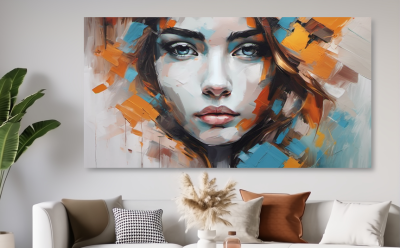Painting, an art form as old as civilization itself, transcends schilderij mere aesthetics to embody a rich tapestry of human expression, history, and culture. Its evolution reflects not just changes in technique and medium but also shifts in human thought, emotion, and perception.
The Origins of Painting
The roots of painting stretch back to the earliest days of human history. Ancient cave paintings, such as those found in Lascaux and Altamira, offer a glimpse into the lives and beliefs of our prehistoric ancestors. These primal artworks, created using natural pigments and rudimentary tools, were more than mere decorations—they were vital components of early human rituals and storytelling.
The Evolution of Techniques
As societies advanced, so too did painting techniques. The Egyptians refined the use of encaustic painting, where pigments were mixed with hot wax, while the Greeks and Romans experimented with frescoes, applying pigments onto wet plaster. The Renaissance marked a revolutionary period, introducing techniques like linear perspective and chiaroscuro, which brought unprecedented realism and depth to paintings.
During the 19th century, the advent of Impressionism transformed the art world. Artists such as Claude Monet and Edgar Degas embraced new approaches to color and light, capturing fleeting moments and everyday scenes with vibrant brushstrokes. This period paved the way for modern movements like Cubism and Abstract Expressionism, where artists like Pablo Picasso and Jackson Pollock pushed the boundaries of traditional representation.
Painting in the Modern Era
Today, painting continues to evolve, reflecting contemporary issues and innovative techniques. The fusion of traditional methods with digital technology has led to exciting new possibilities, from digital canvases to augmented reality experiences. Modern painters experiment with mixed media, installation art, and conceptual approaches, challenging viewers to reconsider the nature of art and its role in society.
The Impact of Painting on Society
Painting is more than a personal expression; it has a profound impact on society. It serves as a mirror to human experience, documenting historical events, cultural shifts, and personal struggles. Iconic works like Leonardo da Vinci’s “Mona Lisa” or Frida Kahlo’s self-portraits have become symbols of broader human themes, resonating across generations and cultures.
Moreover, painting fosters dialogue and reflection. Art galleries and museums offer spaces where viewers can engage with diverse perspectives and interpretations, often sparking conversations about identity, politics, and ethics. In this way, painting not only enriches our visual landscape but also challenges and inspires us to think more deeply about the world around us.
Conclusion
Painting, with its rich history and dynamic present, remains a powerful medium for human expression. From ancient cave walls to contemporary digital canvases, it captures the essence of human creativity and continues to evolve with each passing era. Whether as a personal endeavor or a societal commentary, painting endures as a testament to our unending quest to understand and articulate the human experience.

